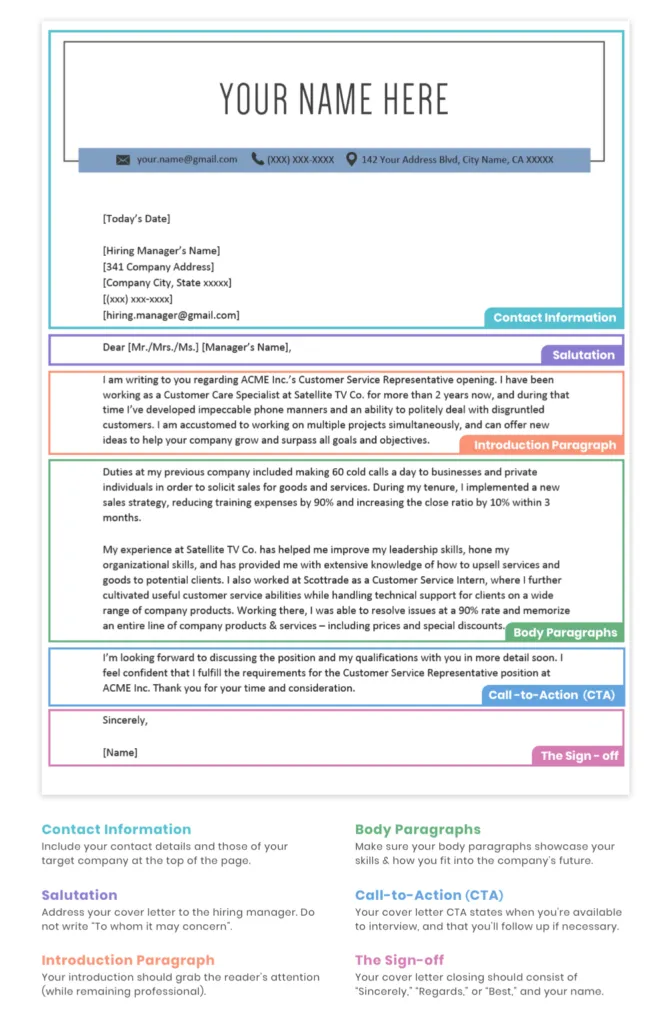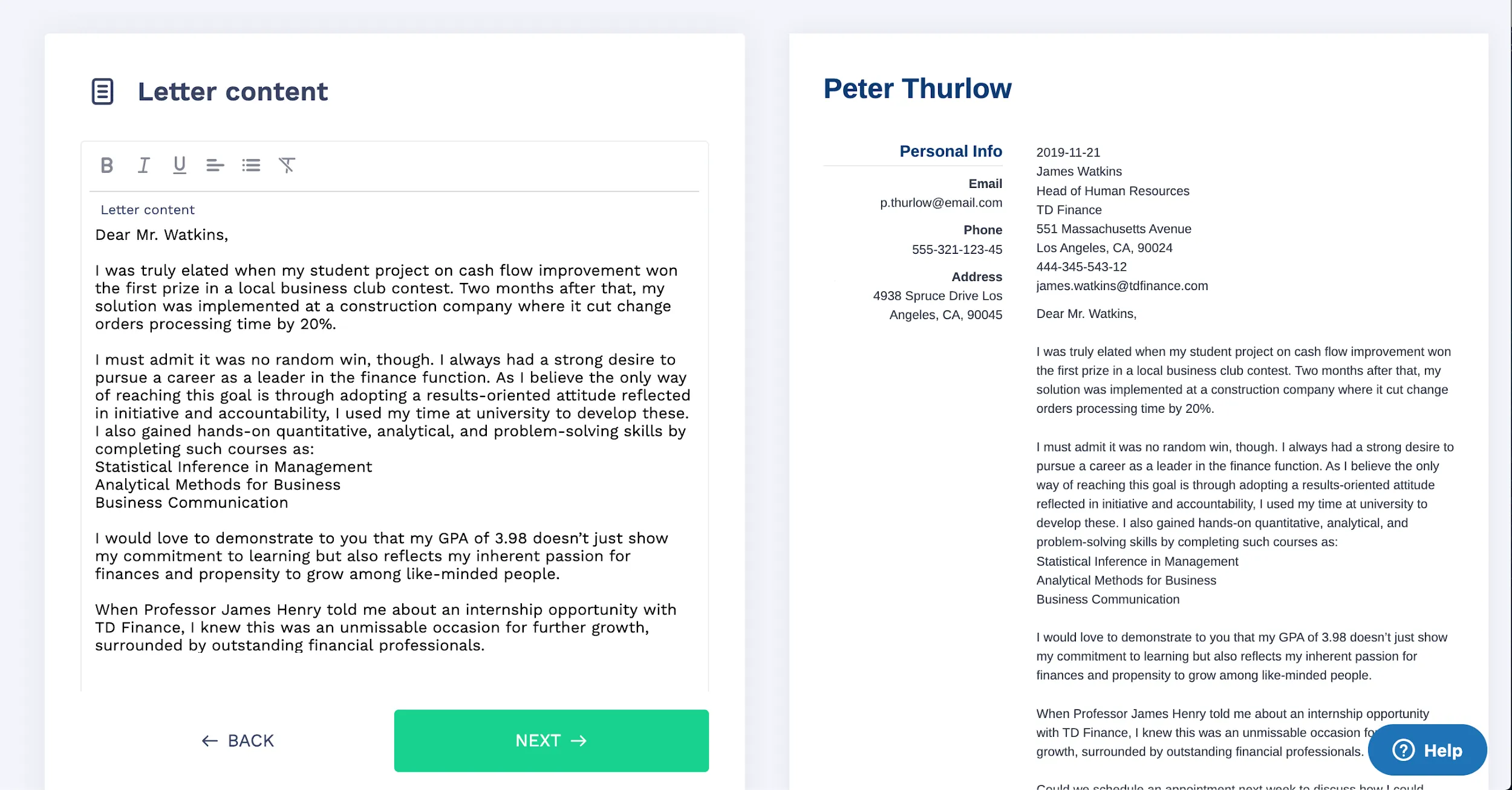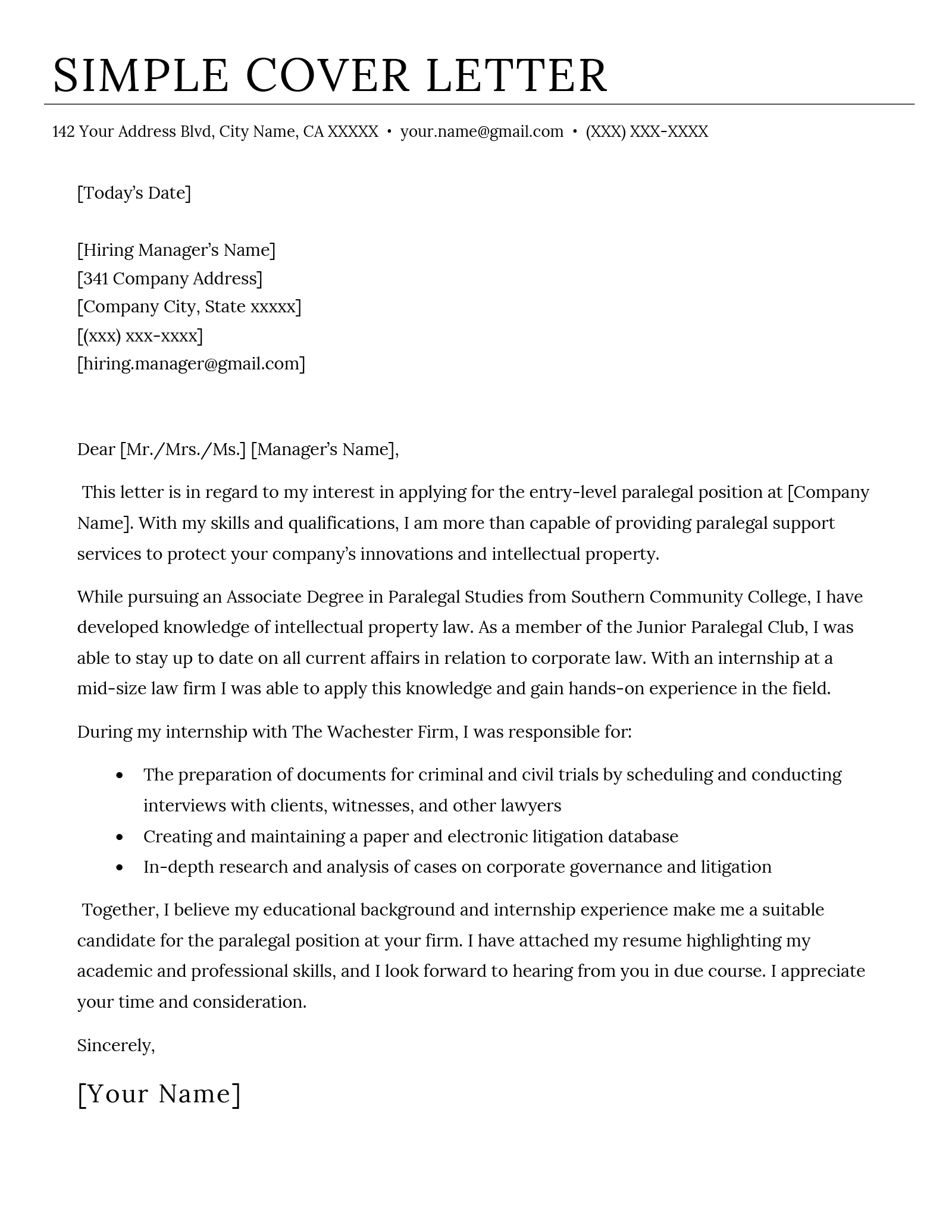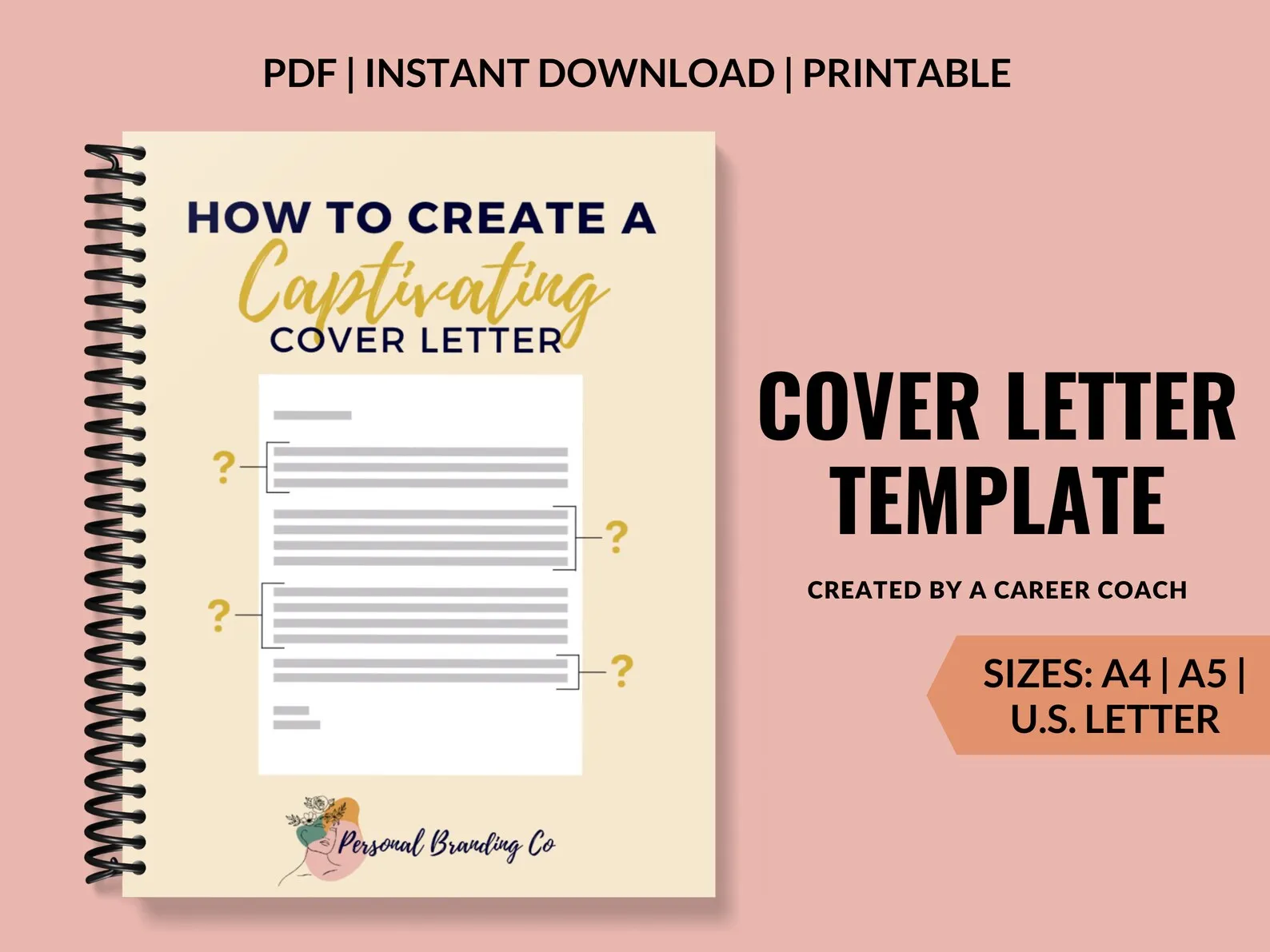Understanding the Importance of a Cover Letter
In the competitive landscape of job applications, a well-crafted cover letter serves as your personal introduction to a potential employer. It’s your opportunity to make a strong first impression, going beyond the basic information presented in your resume. A compelling cover letter demonstrates your genuine interest in the specific role and the company, while also highlighting your relevant skills and experiences. It allows you to connect your qualifications to the employer’s needs, setting you apart from other candidates. Essentially, a cover letter is a vital tool in the job search process because it is your chance to tell the employer your story, showcasing not just what you’ve done, but also why you’re the right fit for the role. Failing to include one or submitting a generic cover letter can be a missed opportunity, so taking the time to personalize and refine your letter is a worthwhile investment.
Why Cover Letters Matter
Cover letters provide context to your resume. They explain the ‘why’ behind your career choices and connect your skills and experience to the specific job requirements. Unlike a resume, which is a summary of your professional background, a cover letter allows you to elaborate on your accomplishments, explain any gaps in your employment history, and express your personality. It demonstrates your communication skills and attention to detail, which are highly valued by employers. Furthermore, it can be used to demonstrate your understanding of the company’s mission and values, signaling that you’ve done your research and are genuinely interested in the opportunity. In short, the cover letter serves as your advocate, making the case for why you are the best candidate for the position and giving the hiring manager a reason to delve further into your qualifications.
Common Mistakes to Avoid

Many applicants unintentionally sabotage their chances with cover letters that contain easily avoidable errors. One common mistake is failing to tailor the letter to the specific job and company. Generic cover letters that could be sent to any employer demonstrate a lack of effort and interest. Another frequent error is focusing too much on what you want rather than on how you can contribute to the company. Cover letters should be about solving the employer’s problems, not simply listing your qualifications. Grammatical errors, typos, and poor formatting also create a negative impression. Additionally, writing excessively long cover letters or rehashing your resume verbatim can bore the reader and result in your application being overlooked. Finally, not including a clear call to action, such as requesting an interview, leaves the reader unsure of how to proceed. Avoiding these pitfalls is crucial for writing a cover letter that effectively advocates for your candidacy.
Top 5 Tips to Write a Killer Cover Letter
Tip 1 Personalize Your Letter
Personalization is key to a cover letter that grabs attention. Begin by addressing the hiring manager by name, if possible, rather than using a generic greeting. Demonstrate that you’ve researched the company and understand its mission, values, and current projects. Tailor your skills and experiences to the specific requirements of the job description. Explain why you’re interested in that particular role and company, showing that you’re not just sending out a mass application. The goal is to create a connection with the reader, making your letter stand out from the crowd and signaling your genuine interest and understanding. A personalized approach significantly increases the chances of your cover letter getting noticed and advancing your application.
How to Tailor Your Letter

Tailoring your cover letter requires careful attention to detail. Start by thoroughly reviewing the job description and identifying the key skills and qualifications the employer is seeking. Then, match your experiences and achievements to those requirements, providing specific examples of how you’ve demonstrated those skills in the past. Use the same keywords and phrases from the job description, but don’t simply copy and paste. Instead, incorporate them naturally into your writing, showing how your experience aligns with their needs. Research the company and its industry, incorporating relevant information into your letter to demonstrate your understanding of the company’s goals and challenges. Each cover letter should be different, reflecting the unique requirements of the job and the specific values of the company you’re applying to.
Tip 2 Highlight Relevant Skills
Your cover letter is the perfect place to showcase the skills that align with the job requirements. Don’t just list your skills; provide specific examples of how you’ve used those skills to achieve results. Quantify your accomplishments whenever possible, using numbers and data to illustrate your impact. For instance, instead of saying ‘Managed social media,’ state ‘Increased social media engagement by 30% in six months.’ This demonstrates that you understand the value of quantifiable results. Prioritize the skills that are most relevant to the position and elaborate on how you’ve applied them in previous roles. By clearly demonstrating your capabilities, you make it easier for the employer to see you as a valuable asset to their team. Focus on the skills that the job description emphasizes, showing a direct correlation between what they seek and what you offer.
Identifying Key Skills from the Job Description
The job description is your roadmap for identifying the key skills to highlight in your cover letter. Carefully read the description, paying close attention to the qualifications section. Identify the essential skills, experience, and education the employer is seeking. Look for frequently mentioned keywords and phrases. These are often the core competencies the company considers most important for the role. Make a list of these keywords and cross-reference them with your skills and experiences. Then, structure your cover letter around these key skills, providing specific examples of how you’ve demonstrated them in previous roles. Ensure that you directly address the employer’s needs, showcasing how your skills and experience align with their expectations. This targeted approach increases the likelihood that your application will resonate with the hiring manager.
Tip 3 Showcase Your Enthusiasm

Enthusiasm is contagious and can make a significant difference in how your cover letter is received. Demonstrate your passion for the role and the company by clearly articulating why you’re interested in the opportunity. Explain what specifically excites you about the position and how your skills and experiences align with the company’s goals. Show that you’ve done your research, understand the company’s mission, and are eager to contribute to its success. Use enthusiastic language, but avoid hyperbole. Be genuine and sincere in your expressions of interest. The goal is to make the hiring manager feel that you are not just looking for a job, but are genuinely excited about the opportunity to work for their company. Enthusiasm, when coupled with relevant skills, can create a compelling case for your candidacy.
Expressing Genuine Interest
Expressing genuine interest involves going beyond generic statements like, ‘I am interested in this position.’ Instead, specify what aspects of the role or company appeal to you. Mention specific projects, initiatives, or values that resonate with you. Demonstrate that you’ve researched the company’s recent achievements or future goals and explain how you envision yourself contributing. This shows that you’re not just applying to any job but are specifically drawn to this particular opportunity. Avoid simply stating that you ‘want’ the job; show why you’re the best fit. Focus on your understanding of the company’s needs and articulate how your skills and experiences can help them achieve their objectives. This genuine approach makes your interest more convincing and memorable to the hiring manager.
Tip 4 Keep it Concise and Focused
In today’s fast-paced environment, hiring managers often have limited time to review applications. Therefore, it’s essential to keep your cover letter concise and focused. Aim for a letter that is no more than one page in length, typically around 250-400 words. Get to the point quickly and avoid unnecessary jargon or lengthy anecdotes. Focus on the most relevant information, highlighting your key skills and experiences that align with the job requirements. Each paragraph should have a clear purpose, and the overall structure should be logical and easy to follow. Use strong action verbs and concise sentences to convey your message effectively. By being brief and to the point, you demonstrate respect for the hiring manager’s time while ensuring your most important qualifications are clearly communicated.
Structuring Your Letter Effectively

Effective structure is vital for a clear and compelling cover letter. Start with a strong opening that grabs the reader’s attention and states the purpose of your letter. The body of the letter should then highlight your key skills and experiences, providing specific examples and quantifiable results. Follow the format of introduction, body paragraphs (2-3), and a conclusion. Each paragraph should address a specific point or aspect of your qualifications. Use clear headings and subheadings to organize your content and make it easy to scan. End with a strong call to action, such as requesting an interview or expressing your enthusiasm for the next steps. Ensure your letter flows logically, with each section building on the previous one. This structure helps the reader understand your qualifications quickly and efficiently, increasing your chances of making a positive impression.
Tip 5 Proofread and Edit Carefully
Typos, grammatical errors, and formatting mistakes can undermine the credibility of your cover letter and create a negative impression. Always proofread your cover letter thoroughly before submitting it. Check for spelling errors, grammatical inconsistencies, and punctuation mistakes. Review the formatting to ensure it is consistent and visually appealing. Use a spell checker and grammar checker, but don’t rely on them entirely. Have a friend, family member, or career advisor review your letter as well. Fresh eyes often catch errors you might miss. A polished, error-free cover letter demonstrates attention to detail and professionalism, which are essential qualities for any job seeker. Take the time to review, revise, and refine your letter to ensure it’s the best representation of your skills and qualifications.
Tools and Techniques for Proofreading
Several tools and techniques can help you proofread your cover letter effectively. Start by reading your letter aloud. This helps you catch awkward phrasing and grammatical errors that you might miss when reading silently. Use a spell checker and grammar checker, such as Grammarly, to identify potential mistakes. Pay close attention to commonly confused words, such as ’there,’ ’their,’ and ’they’re.’ Check for consistency in formatting, including font size, margins, and spacing. Print out a hard copy of your letter and review it with a pen. This can help you spot errors you might miss on the screen. Ask a trusted friend or colleague to review your letter and provide feedback. Another helpful tip is to set your cover letter aside for a day or two and then review it with a fresh perspective. These tools and techniques can greatly improve the quality of your cover letter and increase your chances of success.
Cover Letter Formatting and Style

The formatting and style of your cover letter contribute significantly to its overall professionalism. Use a clean, readable font such as Times New Roman, Arial, or Calibri, with a font size between 10 and 12 points. Set margins to at least one inch on all sides. Use single spacing within paragraphs and double spacing between paragraphs. Align the text to the left and avoid full justification. Include your contact information at the top, followed by the date and the hiring manager’s contact information. Use clear headings and subheadings to organize your content and make it easy to scan. Maintain a professional tone throughout, using formal language and avoiding slang or jargon. Proofread carefully to ensure there are no spelling or grammatical errors. A well-formatted and professionally styled cover letter demonstrates your attention to detail and increases your chances of making a positive impression on the hiring manager. Remember, the goal is to make your cover letter easy to read and visually appealing.
